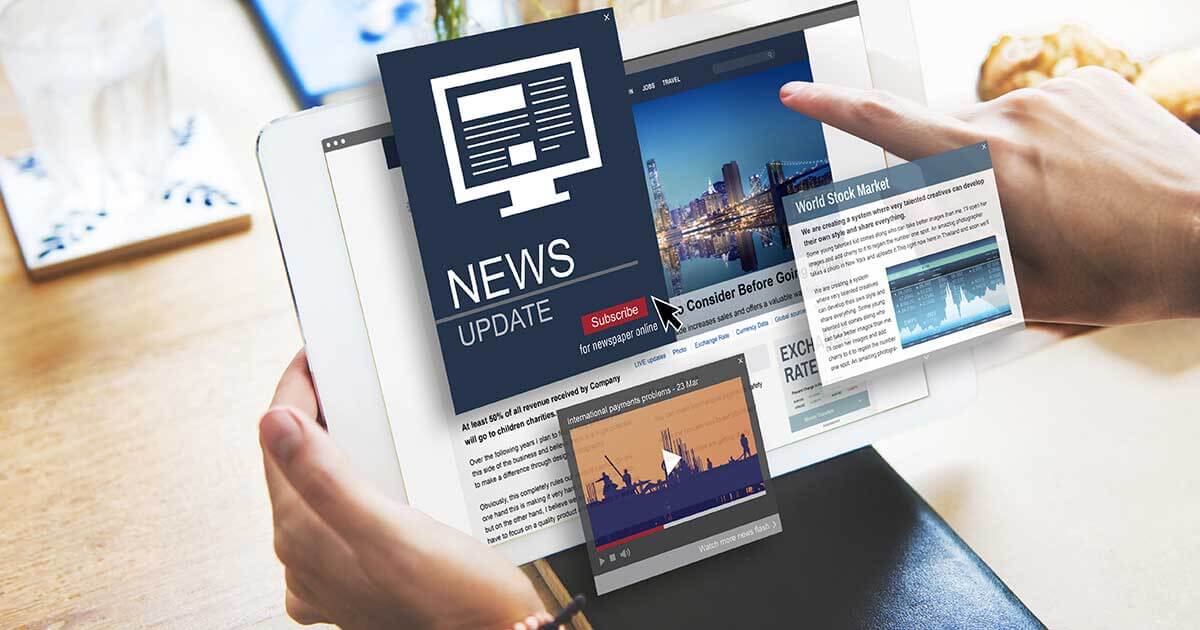The Buzz on Popular News
The Buzz on Popular News
Blog Article
Little Known Questions About Popular News.
Table of ContentsThe Popular News IdeasThe smart Trick of Popular News That Nobody is Talking AboutAn Unbiased View of Popular NewsPopular News Fundamentals Explained
Age is also an element in the way individuals see the role of social networks. Younger social media sites information consumers are more likely to claim it has affected their knowing for the far better. Regarding half of social media sites news customers ages 18 to 29 (48%) say information on social media makes them much better informed, contrasted with 37% of those 30 to 49, 28% of those 50 to 64, and 27% of those 65 and older.Journalists weigh information worths when identifying whether or not to cover an event or statement. Perhaps the most important component of newsworthiness is whether or not the information product being connected influences an information electrical outlet's audience.
Research on a state's new tax obligation code likely will not generate the very same passion throughout state borders. Periodically professionals can aid center a larger nationwide story that impacts even more than just a city or state.
If you are publishing newsworthy study, loop in MarComm before the article being released to ensure that the pitch can emphasize the most recent component of the story: the magazine of the research. Occasions and news that involve prominent numbers are more most likely to generate media protection. Brows through from nationwide numbers typically call for months of prep work due to expected neighborhood interest.
Facts About Popular News Uncovered
Stories usually involve some type of dispute. By interpretation, these tales are generally debatable to some level. College staff and faculty are generally perceived as impartial experts. We can assist mitigate potential reputational risk with these tales while additionally increasing the probabilities of generating insurance coverage. While several of the above information values are intertwined, human rate of interest stories typically stand apart.
Human rate of interest aspects can include information value to various other tales that could seem doing not have in the various other worths. The novelty or quirk of a situation can help affect whether or not an information outlet is likely to cover a tale. While this is not an exhaustive checklist, checking to see if your news product or occasion has these top qualities prior to calling us will certainly assist you figure out which elements hold one of the most information value.

The Definitive Guide for Popular News
There is additionally considerable evidence that more customers can start to pay for news in the futureif authors can recognize them and serve them well. Fifty percent of those who do not spend for news proactively look for out information and resemble customers in numerous ways. And nearly 2 in 10 of those that do not sign up for news currently indicate they are inclined to begin to pay in the future.
We then ask a set of concerns to identify whether individuals pay for specific kinds of news resources (Popular News). We asked people to name the resources they use most oftenwhether More Help they spend for them or nothow they utilize them, the specific things they think about essential regarding them, and some associated inquiries concerning the expense and worth of that source
People are drawn to news as a whole for two reasons over others: A wish to be educated people (paper clients specifically are very encouraged by this) and since the publication they register for excels at covering particular subjects about which those clients particularly care. While there are a host of reasons, the No.
Greater than 4 in 10 additionally cite the truth that loved ones subscribe to the very same product (Popular News). More than a third of individuals claim they originally subscribed in feedback to a discount rate or promo. In print, people also are moved greatly to subscribe to get coupons that conserve them money, something that has untapped ramifications in electronic
The smart Trick of Popular News That Nobody is Talking About
About half are "information hunters," suggesting they proactively choose information rather than mostly encountering it in a more easy method, though the information that nonpayers are seeking (in the meantime, a minimum of) Read Full Article is usually regarding national politics. Like subscribers, much of these people likewise obtain information several times a day, utilize the information in methods comparable to customers, and want similar topics, consisting of foreign or international information.

Of those who do pay, 54 percent sign up for newspapers in print or digitally, which represents 29 percent of Americans in general. The majority of them get a print publication in addition to their newspaper and pay for two to 4 information sources in overall, some a lot more. And while 53 percent are long-time clients (5+ years), even more than a quarter (27 percent) have actually acquired their newspaper registration within the past year.
Couple of print clients believe it from this source most likely they will certainly switch over to a digital-only membership in the future, and over half of those who prefer digital have never ever paid for a print version of the exact same source. Fully 75 percent of newspaper payers say they mostly checked out the paper in print, while 21 percent are primarily electronic customers, and 4 percent explain themselves as equally divided.
Report this page